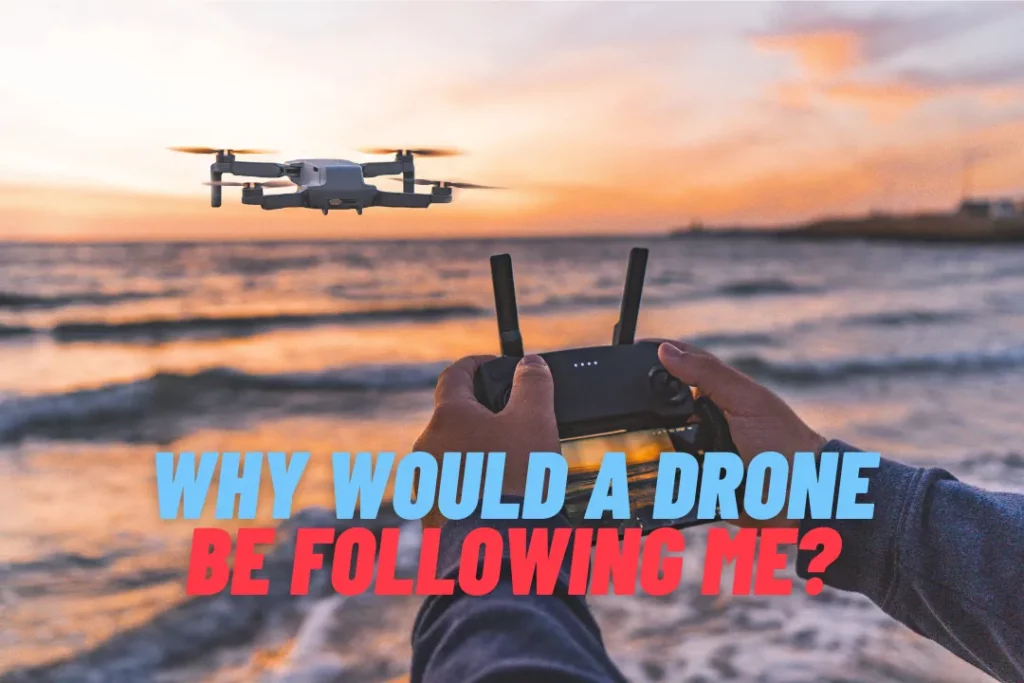
There are several possible reasons why a drone might be following you:
Aerial Photography or Videography:
Table of Contents
The drone could be capturing footage of you for photography or videography purposes, such as for a film or commercial project.
Surveillance:
Unfortunately, there are cases where drones are used for surveillance purposes, such as for stalking or spying on an individual. If you suspect that someone is using a drone to follow you without your consent, you should report it to the authorities.
Recreation:
Sometimes, drone enthusiasts may simply be flying their drones for fun and could be following you unintentionally. In this case, it’s best to approach the drone operator and ask them to stop following you if it makes you uncomfortable.
Navigation:
Drones are sometimes used for navigation purposes, such as for search and rescue missions or mapping out terrain. If you are in an area that requires navigation, such as a remote hiking trail, the drone may be following you to assist in navigation.
In general, if you notice a drone following you and you are unsure of the reason, it’s best to approach the operator and ask them about their intentions. If you feel uncomfortable or suspect malicious intent, it’s important to report it to the authorities.
How Do Drones Fly?
Drones, also known as unmanned aerial vehicles (UAVs), fly using a combination of various technologies and components, including:
Propellers: Drones use four or more propellers to generate lift and control their movement. The propellers spin at high speeds to create the upward force needed to lift the drone off the ground and keep it in the air.
Motors: The propellers are powered by electric motors, which are controlled by a flight controller. The flight controller sends signals to the motors to adjust the speed and direction of the propellers, allowing the drone to move up, down, forward, backward, and sideways.
Battery: Drones are powered by rechargeable lithium-ion batteries that provide the electric power needed to run the motors and other components.
Sensors: Drones are equipped with sensors, such as accelerometers, gyroscopes, and barometers, that help them maintain stability and balance in the air. These sensors can detect changes in altitude, orientation, and movement and make adjustments to the drone’s flight path accordingly.
GPS: Many drones are equipped with GPS (Global Positioning System) technology, which allows them to navigate and maintain their position in the air. GPS can also be used for tracking and waypoint navigation.
Camera: Many drones have built-in cameras or cameras that can be attached to the drone, allowing them to capture photos and videos from an aerial perspective.
Overall, drones are controlled remotely by a pilot on the ground who uses a controller to send commands to the drone, such as changing its altitude or direction. The drone’s onboard components work together to carry out these commands and keep the drone in the air.
Why Can’t You Fly Drones In National Parks?
The National Park Service (NPS) regulates the use of drones in national parks in the United States. The reason for restricting drone use in national parks is to protect park resources, wildlife, and visitors’ experience.
Drones can create a disturbance to wildlife, including causing stress and altering their behavior. They can also cause noise pollution and be disruptive to other visitors who come to enjoy the natural sounds and scenery of the park. Additionally, drones can pose a safety risk if they crash or collide with objects in the park.
Furthermore, the Federal Aviation Administration (FAA) regulates airspace, and flying a drone in a national park can violate FAA regulations if the drone is flown in restricted airspace, such as near airports or military installations.
However, there are some cases where drones are allowed in national parks, such as for research or emergency purposes. In these cases, individuals must obtain proper permits and follow specific guidelines set by the park service.
Overall, the NPS restricts drone use in national parks to preserve the natural and cultural resources of the parks and provide visitors with a safe and enjoyable experience.


1 thought on “Why Would A Drone Be Following Me?”
Comments are closed.